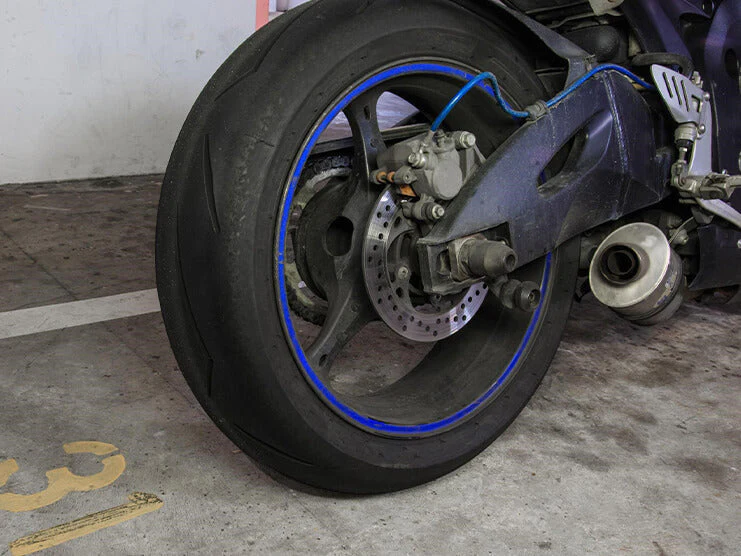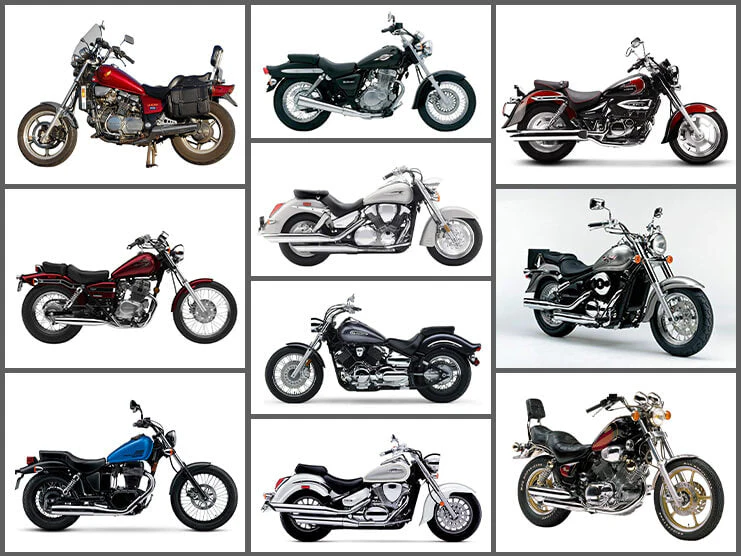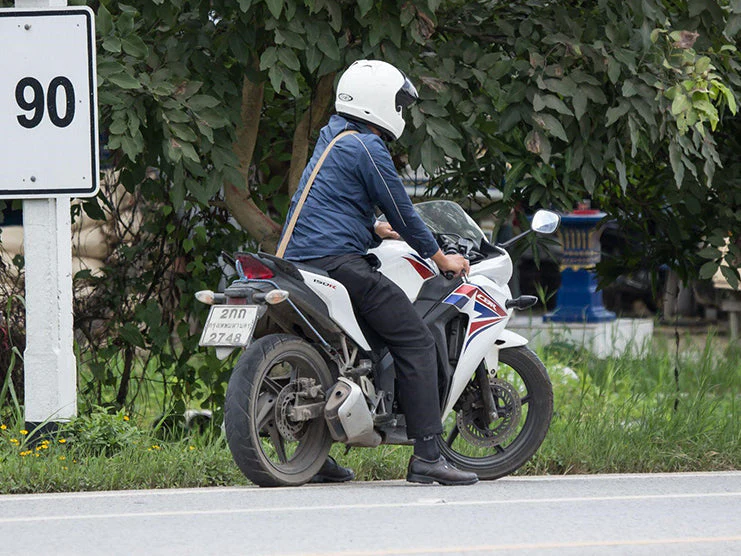Table of Content
To ensure safer rides and smooth touring, your motorcycle tires must have ideal air pressure. However, if your motorcycle tires are in bad condition, they will lose air pressure even while parked. There are several reasons why motorcycle tires lose air pressure. It is best to check your motorcycle tires’ air pressure before going for a ride to ensure a safe journey. If you do not want to lose control of your motorcycle due to under-inflated or flat tires, read this article to learn why motorcycle tires lose air pressure and how to prevent this.
1. Why Do Motorcycle Tires Lose Air Pressure?
1.1 Material Used
Motorcycle tires differ from car tires as they are softer and more flexible. Motorcycle design does not support hard tires installed on cars. A motorcycle has to be able to lean when turning corners, while a car does not. When you are leaning on a motorcycle to turn a corner, the contact patches on motorcycle tires shift to the side towards the direction of the turn. Hard tires would slip in such situations. The flexibility and softness of motorcycle tires allow them to conform to the road while turning corners. However, due to being soft and porous, air can easily escape through the walls of motorcycle tires over time.
1.2 Heavy-Duty Performance
Motorcycles are versatile commuters designed to maneuver on different terrains and road conditions. To ensure better maneuverability, their tires are designed to provide increased traction and durability. However, constantly riding in extreme riding conditions can cause motorcycle tires to lose air pressure more frequently than other vehicles. They require frequent maintenance checks and repairs. It is best that you check tire pressure after every ride.
1.3 Under- or Over-Inflated Tires
One of the main reasons why motorcycle tires lose air pressure is because they are either under-inflated or over-inflated. To ensure better performance, stability, control, traction, and maneuverability, motorcycle tires must have nominal air pressure. While riding a motorcycle with an under-inflated tire, the surface area of the contact patch touching the road will increase, putting more pressure on the tire and causing more air to leak. Meanwhile, riding a motorcycle with an over-inflated tire makes it more prone to becoming punctured and losing air pressure more quickly because of excessive internal pressure on the tire walls.
1.4 Worn-Out Tires
The most common issue with old motorcycles is worn-out tires that constantly lose air pressure. The reason is that old and worn-out tires often suffer tiny leakages, punctures, and cracks, which lets the air escape more quickly.
1.5 Defective Air Valves
Another prominent cause of air leakage from motorcycle tires is a defective or clumsy air valve. The air valve can become damaged due to various reasons, whether faulty manufacturing or an inexperienced mechanic who accidentally damaged the valve while fixing a flat tire.
1.6 Flat Tire
A flat tire is caused by punctures made by sharp objects, like pieces of glass or nails on the road. Sometimes, a sharp object may not puncture your tire immediately. Instead, it sticks into the tire wall and causes it to lose air steadily. Other times, a puncture immediately causes the tire to lose all of its air.
1.7 Natural Phenomenon
The air inside a motorcycle tire naturally escapes through the rubber through a process known as osmosis or permeation. Air escaping through the rubber surface is a slow and gradual process. It is natural for your motorcycle to lose about 1-3 psi of air pressure within a month. However, if a tire loses more than that, this may indicate an issue that needs to be fixed. Natural air leakage through the tire can increase in extreme weather conditions.
1.8 Extreme Temperature
Hot Temperature
During summer, motorcycle tires lose air pressure more quickly if they are parked under the sun for a long period. This is because a temperature rise can cause the air inside the tires to become hotter and expand as a result. This expansion causes the air molecules to escape through the rubber surface, resulting in lower air pressure.
Cold Temperature
Low temperatures can also cause motorcycle tires to lose air pressure. Motorcycle tires can lose about 1-2 psi with a decrease of around 10°C.
1.9 Deformed Wheel
Nowadays, most motorcycles are fitted with tubeless tires because they have several advantages, such as being more durable. With tubeless tires, the tires are stuck to the wheels due to suction caused by a difference in air pressure. A motorcycle that has been in an accident can have damaged and deformed wheels. A deformed wheel is not able to hold onto a tubeless tire, resulting in a loss in air pressure.
Also Read: HOW TO BALANCE A MOTORCYCLE TIRE BY YOURSELF
1.10 Sidewall Leaks
Motorcycle tire sidewalls can also become damaged during repairs or due to riding with an over-inflated tire. Cracks can start to appear on the sidewalls, resulting in a loss in air pressure.
2. How to Prevent Motorcycle Tires From Becoming Flat?
- Maintain regularly
- Inspect motorcycle tires before going for a ride
- Check tire pressure before every ride
- Ride carefully and slowly
- Avoid riding aggressively
- Avoid hitting potholes
- Avoid riding on bumpy and damaged roads
- Do not ride if motorcycle tires are under- or over-inflated
- Keep tire pressure nominal
- Do not park your motorcycle under the sun on hot days
- Do not park your motorcycle outside during winter
- Replace worn-out motorcycle tires
- Learn how to repair a flat tire
- Replace deformed wheels
- Avoid overloading your motorcycle
Also Read: TOOLS YOU NEED TO CHANGE A MOTORCYCLE TIRE
3. Difference Between Tube and Tubeless Tires
3.1 Tube Tires
Tube tires have rubber tubes inside the tires. The air valve is attached to the tube to adjust the air pressure. In a tube tire, the air is filled inside the tube, not the tire, to keep the tire moving. The tire acts as a cover to protect the tube from external elements that could damage it.
3.2 Tubeless Tires
Tubeless tires do not have a tube inside the tire. The tire sticks to the wheel through suction.
3.3 Pros and Cons of Tube Tires
| Pros of Tube Tires | Cons of Tube Tires |
|---|---|
| Cheaper | Can be easily punctured |
| Easy to repair | Can be easily deflated |
| Lightweight repair kit | Heavyweight |
| Less comfortable | |
| Inner tube acts as a cushion | Reduced handling & performance |
| Good for riding on bumpy roads | High-maintenance |
| Sudden punctures can be dangerous |
3.4 Pros and Cons of Tubeless Tires
| Pros of Tubeless Tires | Cons of Tubeless Tires |
|---|---|
| Durable | Expensive |
| Deflates at a slower rate | Requires several tools and products to repair |
| Provides better traction | Difficult & takes time to install |
| Lightweight | |
| Ensures smooth rides | |
| Lower rolling resistance | |
| Ensures comfortable rides | |
| Provides better handling | |
| Provides better stability and maneuverability | |
| Provides better fuel efficiency | |
| Safer |
3.5 Verdict
Tubeless tires have more advantages over tube tires. They are safer, durable, last longer, and improve fuel efficiency, handling, and performance. Due to having more advantages, tubeless tires are the preferred choice of motorcycle manufacturers.
4. Frequently Asked Questions (FAQs)
4.1 Is It Safe to Ride with Low Tire Pressure?
Riding with low tire pressure can be unsafe, especially if your motorcycle has tube tires. Deflated tires compromise handling, performance, and stability and can also become irreparably damaged. The tires can become flat at any moment during a ride, which can be dangerous.
4.2 What is the Nominal Motorcycle Tire Pressure?
The nominal tire pressure for most motorcycles' front and rear tires is 32 psi. However, it is best to check your motorcycle owner’s manual before you start inflating your motorcycle tires.
5. Last Words
Tires are a crucial motorcycle component as they are in direct contact with the ground, handle rough terrain, and bear most of your vehicle’s load. Do not overload your motorcycle as it puts more pressure on the tires. They must be well-maintained and checked for issues regularly to ensure safe rides. Riders should carry a motorcycle tire repair kit and learn how to check tire pressure and repair flat tires, especially if they regularly go on motorcycle tours. To keep your motorcycle tires in good shape and prevent frequent loss of air pressure, follow the steps mentioned in this article.
If you want to improve your motorcycle’s touring performance, customize it with lightweight and good-quality parts to avoid putting extra pressure on the tires. Viking Bags has several touring aftermarket parts, including crash bars, fairings, sissy bars, backrests, saddlebags, and tank bags. These customization options can improve both your motorcycle’s aesthetics and performance.













Leave a comment
All comments are moderated before being published.
This site is protected by hCaptcha and the hCaptcha Privacy Policy and Terms of Service apply.